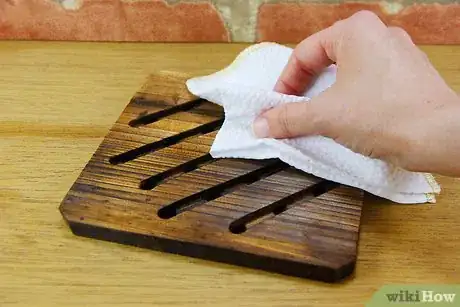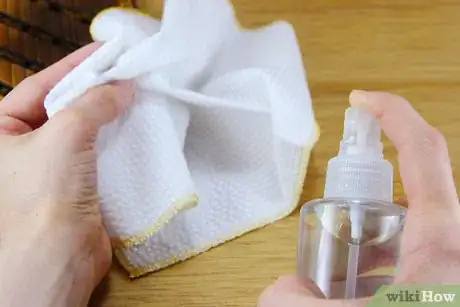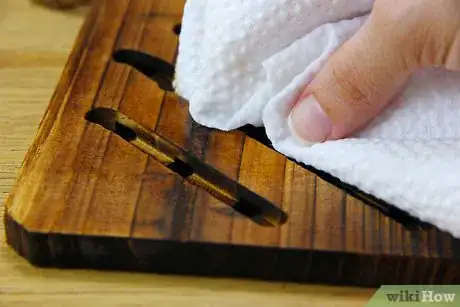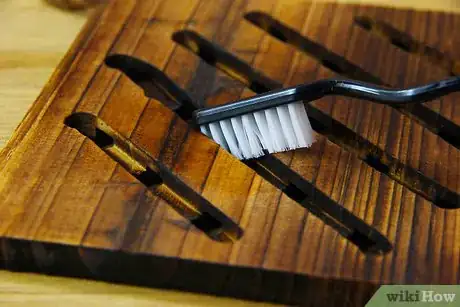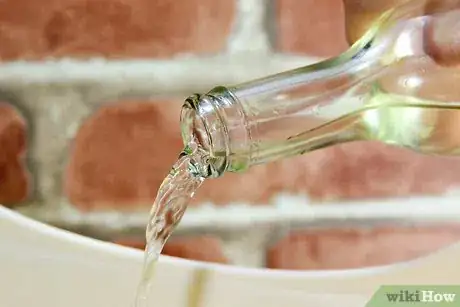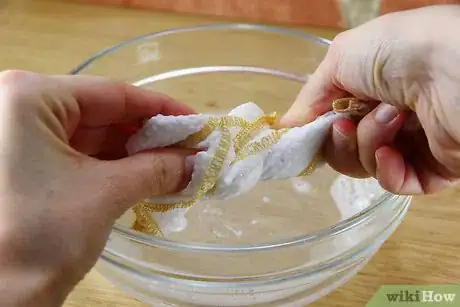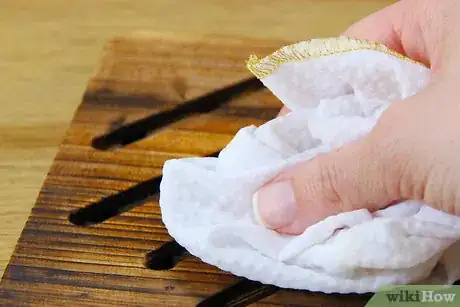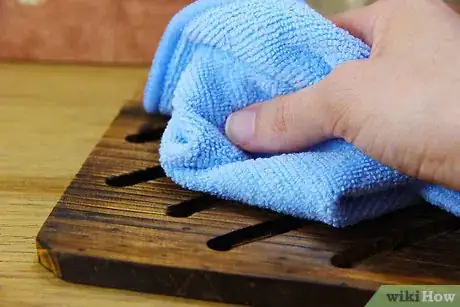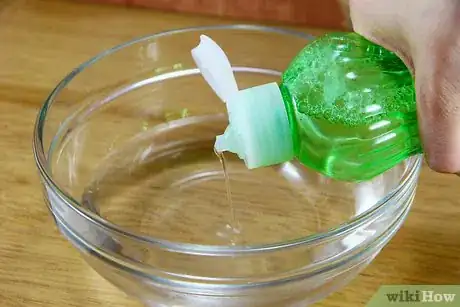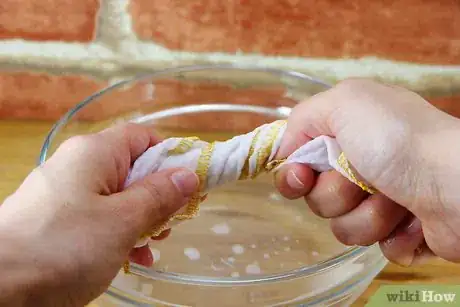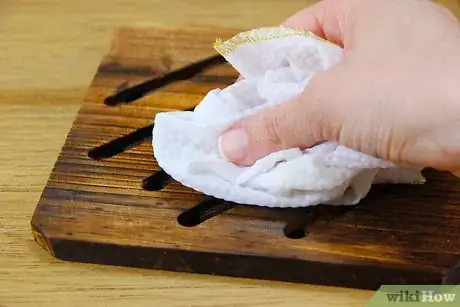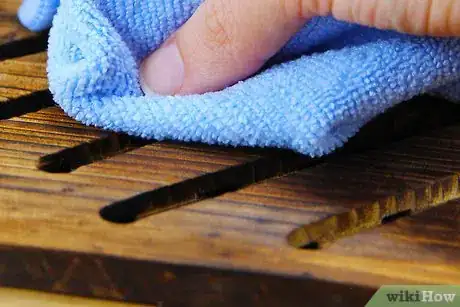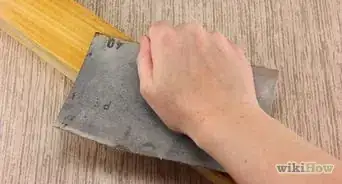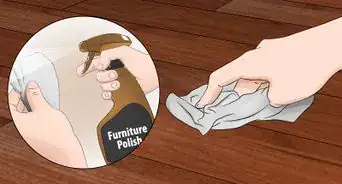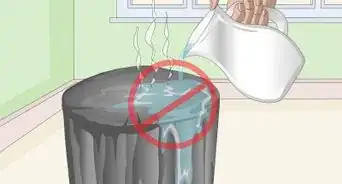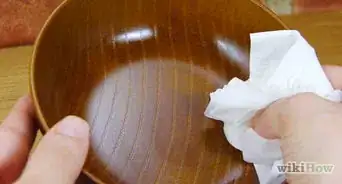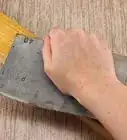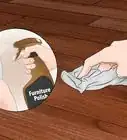This article was co-authored by wikiHow Staff. Our trained team of editors and researchers validate articles for accuracy and comprehensiveness. wikiHow's Content Management Team carefully monitors the work from our editorial staff to ensure that each article is backed by trusted research and meets our high quality standards.
This article has been viewed 69,905 times.
Learn more...
Woodwork provides a beautiful finish or style to any home. It is usually covered in a finish of wax, stain, oil, or varnish. Woodwork is great to have in your home, but it can nerve-wracking to clean, for fear of damaging the wood. You can buy most of the products you need to clean your woodwork at a home improvement store. Many ingredients in homemade cleaning solutions, such as vinegar and detergent, are available at grocery stores.
Steps
Using Commercial Cleaner
-
1Dust the woodwork. Go over the woodwork with a dusting cloth, duster, or a hose attachment on a vacuum cleaner to remove dust. Make sure to dust in the direction of the grain. Dusting before cleaning assures that the dust is removed rather than shifted around while cleaning with a product.[1]
- You can clean with any type of cloth, but microfiber cloths grab onto dust the best.
-
2Choose a cleaner. There are plenty of cleaners on the market made specifically for cleaning woodwork and/or other household items. You might choose to buy a cleaner instead of making one to ensure that you don’t damage the wood with the wrong type of cleaning solution. You can choose a spray or liquid cleaner.[2]
- A few well-known wood cleaning products are Magic Cabinet and Wood Cleaner, Murphy’s Oil Soap, and Method All-Purpose Spray.
- You can purchase a cleaner at a home improvement store or most supermarkets.
Advertisement -
3Put the cleaner onto a cloth. You can spray or put the cleaner onto a cloth. If using a spray, it is also an option to spray the solution directly onto the wooden surface. You should only need to use a few drops or few sprays of solution, but you should consult the directions on the bottle just in case.[3]
- You can use a cloth, microfiber cloth, sponge, paper towel, or rag.
- Although the cleaner should be okay, test it on a small spot of the woodwork to be sure.
-
4Clean the woodwork. Once you have the cleaner on the cloth or surface, begin gently rubbing it over the woodwork. Rub it into the woodwork in small, circular motions. Make sure you cover every surface, edge, or cranny of the woodwork. Apply more cleaner if you run out while cleaning. Stop when you are satisfied with result.[4]
- If you are cleaning items cabinets or doors, don’t forget to clean the sides that are not in front of you.
- You can wear cotton or rubber gloves while cleaning if you are worried about skin irritation.
-
5Go back with a toothbrush if necessary. If there are small spots or buildups left over, you can take a toothbrush and scrub the spot with cleaner or soap diluted with water. Scrub until there are no spots left over and then go over the surface once more with the cloth. Allow the surface to dry.[5]
- It shouldn’t be necessary to wash the surface off with water once cleaner has been used on it.
- The woodwork should take only a few minutes to dry.
Washing with Vinegar
-
1Use white distilled vinegar. Pour a half cup of vinegar into a bucket. Add a gallon of warm water to the bucket. You may want to double this amount if you will be cleaning a lot of woodwork or cleaning large surfaces. You can add 2 tablespoons of almond or coconut oil and 10 drops of lemon or orange essential oils into the bucket for a better smell once you have finished cleaning. Keep the solution in a bucket, or pour it into a spray bottle.[6]
- Make sure you are using the right type of vinegar. Vinegars, like cider vinegar, can damage the woodwork. Test a spot of solution on the woodwork before cleaning to be sure.
- Vinegar can leave behind a strong smell that lasts for a while. That is why essential oils are used to provide a better smell.
-
2Dip a cloth into the solution. If you are using a spray bottle, then spray a few sprays of the solution onto a cloth or directly onto the woodwork. If you decide to keep the cleaner in a bucket, dip the cloth you are using into the bucket. Make sure to wring the rag out thoroughly before washing.
- It is important to ring out the cloth before cleaning because excess water can damage the woodwork if it penetrates the finish.
- You can use a cloth or rag to clean. A sponge can be used, but it retains water, which could damage the wood.
-
3Clean the surface. Take the cloth and wipe it in a circular motion over the woodwork. It should be moist rather than sopping wet. Clean over every surface, corner, or edge. Put the rag back into the bucket and rinse it out anytime it becomes dirty. Clean until you are satisfied with the outcome.
- You can keep a bucket with the cleaning solution next to you even if you are using a spray bottle.
-
4Buff the surface. Get a fresh, clean cloth that you have not yet used to clean the woodwork. Buff in a circular motion over all of the woodwork. This removes any excess moisture that can cause damage. Try to get the surface as dry as possible. If you see still see a spot, repeat the cleaning and buffing process until the woodwork is as clean as you desire.
- If you clean again, make sure to buff the surface again and allow it to dry.
Cleaning with Detergent
-
1Use dishwashing detergent. Chances are, you already have dishwashing detergent around your home. If not, buy any brand of dishwashing detergent from a supermarket. Look for a mild detergent. Mix one cup of detergent with two cups of water in a bucket, or double that amount if you will be cleaning many or large surfaces. A few brands that offer mild detergents are Ajax, Dawn, and Palmolive. A mild detergent will lather when mixed with water.[7]
- This method works best on woodwork that has been painted, enameled, or varnished. Detergent may turn lacquer and shellac white as they absorb water.[8]
-
2Put the rag into the detergent. Use a rag or cloth and dip it into the bucket. Wring the rag out to remove excess water. Excess water soaks into the surface and causes damage. The rag should be moist when you have finished wringing it out.[9]
- Make sure to test the detergent on a small, hidden part of the woodwork. If it mars the surface, try another method of cleaning.
-
3Rub the cleaner over the surface of the woodwork. Rub the moist rag over the surface of the woodwork. You can rub in small, gentle circles, but avoid rough scrubbing. The detergent needs time to break down the grease and wax. Allow a few minutes for the cleaner to set on the woodwork. Re-wipe the surface once it has sat with the same cloth.[10]
- Do not allow the detergent to sit for too long, or excess water will soak into the wood.
-
4Wipe with a clean cloth. Take a clean cloth that has not been exposed to the cleaner and run some water over it. Wring it out until it is damp. Use the cloth to wipe the surface. This removes the detergent from the woodwork. Then, take a dry paper towel or cloth and wipe the damp surface until it is dry.[11]
- You should completely dry the woodwork on your own rather than leaving it to dry.
Community Q&A
-
QuestionHow do I clean old woodwork?
 Community AnswerYou can still use the advice of this article to clean old woodwork. You can use detergent, cleaner, or vinegar. For older woodwork, it might be best to use cleaner or vinegar. Wash the surface with a damp rag and make sure not to use excess water.
Community AnswerYou can still use the advice of this article to clean old woodwork. You can use detergent, cleaner, or vinegar. For older woodwork, it might be best to use cleaner or vinegar. Wash the surface with a damp rag and make sure not to use excess water. -
QuestionHow do I clean white painted woodwork?
 Community AnswerYou can clean white painted woodwork with dishwashing soap, cleaner, or vinegar. Use a damp cloth with the cleaner on it and wipe the surface of the woodwork until you are satisfied. Make sure not to use excess water.
Community AnswerYou can clean white painted woodwork with dishwashing soap, cleaner, or vinegar. Use a damp cloth with the cleaner on it and wipe the surface of the woodwork until you are satisfied. Make sure not to use excess water. -
QuestionI am cleaning a mansion that was built in 1888. The woodwork is glorious but desperately needs cleaning and special care. What would you recommend for that? There are several kinds of wood.
 Terry HeapsCommunity AnswerI recommend Murphy's Oil soap. Dilute it in water according to the instructions on the bottle. It does wonders for cleaning and bringing back the luster.
Terry HeapsCommunity AnswerI recommend Murphy's Oil soap. Dilute it in water according to the instructions on the bottle. It does wonders for cleaning and bringing back the luster.
Things You'll Need
- Cloth or sponge
- Lemon oil polish
- Commercial wood cleaner or polish
- Warm water
- Bucket
- White distilled vinegar
- Detergent
- Rubber gloves
Warnings
- Always test the cleaner on the woodwork before using it, even if it is a product made for cleaning wood. Using the wrong type of cleaner can result in a ruined piece of woodwork.⧼thumbs_response⧽
- Keep the cleaner away from your eyes and mouth and out of reach from children. Put on gloves while using chemicals.⧼thumbs_response⧽
References
- ↑ http://www.dummies.com/home-garden/home-improvement/cleaning-stain-removal/how-to-clean-wood-furniture-finishes/
- ↑ http://www.thekitchn.com/how-to-clean-wood-kitchen-cabinets-cooking-lessons-from-the-kitchn-218365
- ↑ http://www.thekitchn.com/how-to-clean-wood-kitchen-cabinets-cooking-lessons-from-the-kitchn-218365
- ↑ http://www.thekitchn.com/how-to-clean-wood-kitchen-cabinets-cooking-lessons-from-the-kitchn-218365
- ↑ http://www.thekitchn.com/how-to-clean-wood-kitchen-cabinets-cooking-lessons-from-the-kitchn-218365
- ↑ http://www.cleanmama.net/2015/03/how-to-clean-woodwork-and-cupboards.html
- ↑ http://www.improvenet.com/a/how-to-clean-kitchen-cabinets
- ↑ https://dengarden.com/cleaning/How-to-Clean-Wood-Furniture-Like-a-Professional-Cleaning-Company
- ↑ https://dengarden.com/cleaning/How-to-Clean-Wood-Furniture-Like-a-Professional-Cleaning-Company
About This Article
If you need to clean woodwork, wipe down the surface with a clean cloth to remove any dust, then spray or pour a commercial wood cleaner onto the cloth. If you prefer an all-natural clean, use vinegar instead of a commercial cleaner. Gently rub the cloth in a circular motion over the surface of the woodwork, applying more cleaner if you need to. If there are any grooves or carvings that you can’t reach with the cloth, or if there are stubborn spots of dirt, scrub the area a toothbrush until it’s clean. Once it’s clean, let the woodwork air dry. For tips on cleaning with dish soap, read on!
